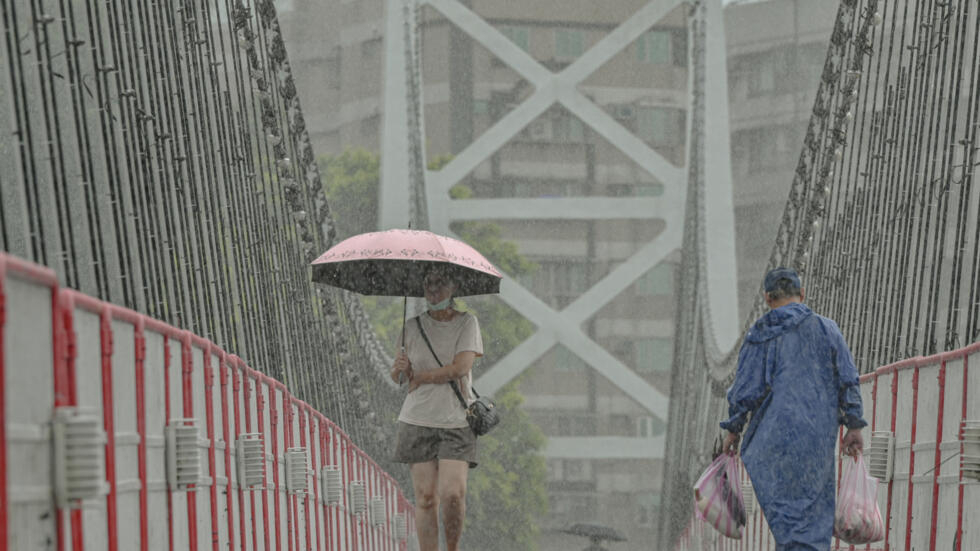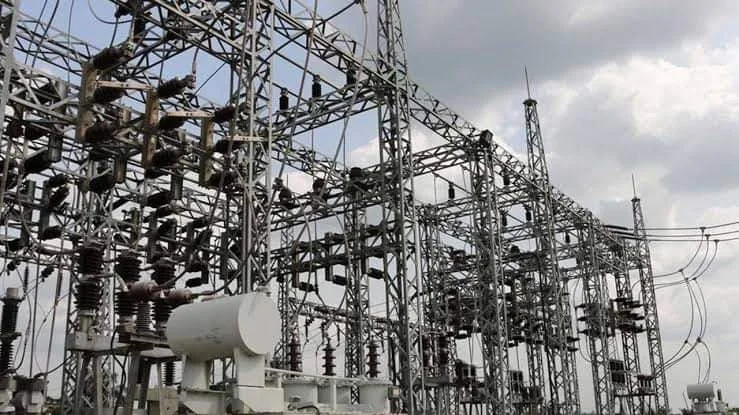As Typhoon Gaemi approached, Taiwan went into lockdown mode on Wednesday, with schools closed, financial markets shut, and a typhoon holiday declared.
The northeastern region of the island braced itself for the impending storm, expecting heavy downpours and powerful gusts to accompany its landfall.”
With sustained winds of 190 kilometres per hour (118 miles per hour), Typhoon Gaemi not only threatened Taiwan but also impacted Japan and the Philippines, prompting the latter to announce the closure of government offices for the day as the storm brought its powerful gusts to the region.
It is expected to make landfall in northeast Taiwan by 10 p.m. (1400 GMT), and President Lai Ching-te urged everyone to “put safety first” during a morning emergency briefing.
Lai said: “Gaemi is this year’s first typhoon to make landfall in Taiwan.
“I hope that through our joint efforts, impact from the typhoon can be minimized, I also encourage fellow citizens across the country not to go out unless necessary during the typhoon, especially to dangerous places.
Severe weather conditions prompted Taiwan to suspend certain aspects of its annual Han Kuang military exercises, which simulate a potential Chinese invasion, but an anti-landing drill proceeded as planned on Wednesday morning on Penghu island, located west of Taiwan.
Meanwhile, authorities took precautions by evacuating over 4,000 residents from vulnerable areas in the northern regions, particularly Hualien, a mountainous zone prone to landslides.
Authorities reported that by the afternoon, the typhoon had injured nearly 60 people across the island.
The severe weather also disrupted transportation services, with trains and ferries suspended and hundreds of flights—both international and domestic—cancelled on Wednesday.
Cheng Jia-ping, the chief of Taiwan’s Central Weather Administration, stated: “We expect the typhoon’s impact to extend to four days (until Friday).”
“Take precautions against heavy rain and strong wind.”
Typhoon Gaemi is forecast to traverse the Taiwan Strait and make landfall in China by Thursday, specifically targeting the eastern provinces of Zhejiang and Fujian, where authorities have issued a red storm alert in anticipation of the severe weather conditions.
In Taiwan’s northeastern Yilan County, powerful waves pounded the coastline, prompting market vendors to swiftly cover their stalls with canvas and shop owners to secure their glass windows with tape.
Meanwhile, at a bustling harbor filled with docked boats, fisherman Hsu took precautions by mooring his vessel in a typhoon shelter. ‘I’m anxious about the typhoon’s impact,’ he said, ‘as my boats are my livelihood and source of income’.
In Taipei, the capital city, government offices shut down and streets became deserted as the typhoon approached, while some businesses took precautions by sandbagging their entrances to protect against potential flooding.
Meanwhile, Taiwan Semiconductor Manufacturing Company (TSMC), the world’s largest contract chipmaker, announced that it would continue normal production operations, having activated its standard typhoon preparedness measures at all fabrication plants.
Taiwan is accustomed to frequent tropical storms from July to October, but experts say climate change has increased their intensity, leading to heavy rains, flash floods, and strong gusts.
In Japan’s southern island region of Okinawa, authorities warned residents to be highly cautious and vigilant in the face of potential storms, high waves, and flooding.
Meanwhile, in the Philippines, intense rainfall in Manila caused extensive flooding, and a landslide in a nearby mountainous province resulted in the loss of four lives.






































Leave a comment